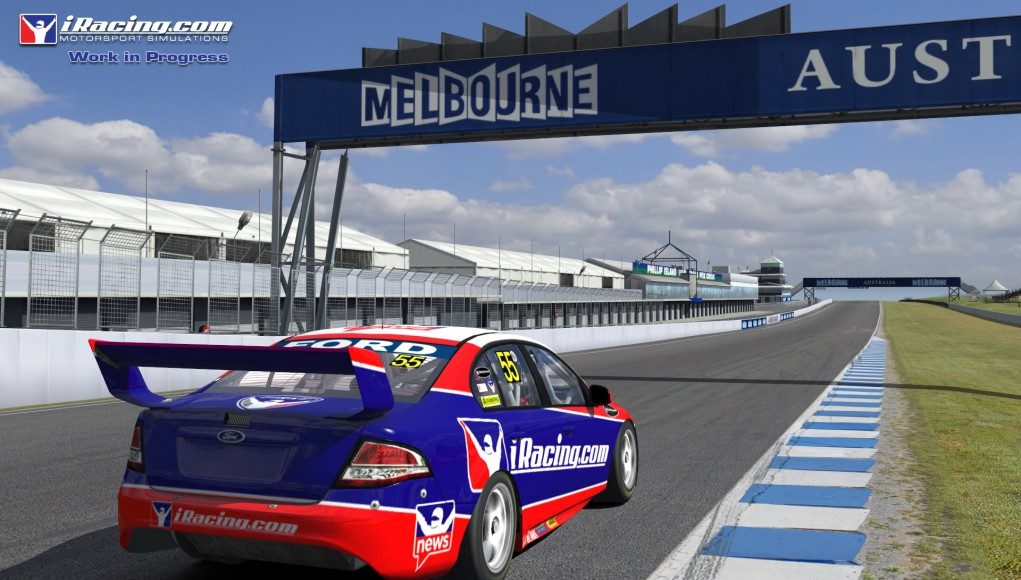 These last few weeks have been the best ever for VR racing fans, with updates to Assetto Corsa and Grid: Autosport both bringing Oculus Rift DK2 support. Now, iRacing, the biggest sim racer out there, has gone live with their latest season update – now also with support for Oculus’s second generation VR headset.
These last few weeks have been the best ever for VR racing fans, with updates to Assetto Corsa and Grid: Autosport both bringing Oculus Rift DK2 support. Now, iRacing, the biggest sim racer out there, has gone live with their latest season update – now also with support for Oculus’s second generation VR headset.
Originally slated for release around 19:00 GMT (15:00 EDT), the iRacing team have been struggling to bring servers back online tonight after rolling out the latest update to the world’s most popular online sim racer. The Season 4 2014 update brings with it a vast array of updates, and some pretty significant advancements for virtual reality enthusiasts.
iRacing has sported Oculus Rift support for some time, and was used by Oculus themselves to demonstrate the power of the Rift to show goers at various events just after the HD Prototype was announced. The original DK1 support was generally very well regarded, but the consensus was that the 1st generation Oculus Rift developer kit was too limited in terms of resolution to be a serious replacement for a standard monitor in every day racing.
The long awaited season 4 update release notes contain a section dedicated to the Oculus Rift. However, although the new version does support both DK2 and the latest Oculus SDK (0.4.2), no head tracking is currently in place. Positional tracking will come in a forthcoming update, but for now Oculus Rift owners will have to do without.
Early word from alpha testing is that the new DK2 support stacks up pretty well. You can read the full set of release notes here, we’ve printed the Oculus Rift specific notes below for your convenience:
Oculus Rift
- Added support for the Oculus Rift DK2 utilizing the 0.4.2 SDK (with several custom bug fixes).
- Although the Rift’s new direct access mode is functional with iRacing in some cases, the simulator seems to operate best with the Rift configured as an extended desktop monitor. The Rift’s direct access mode is known to crash or fail in many PC configurations, particularly configurations including multiple GPU’s (and not only with iRacing). Even when it works, it usually works better in extended desktop mode – direct access mode is still a work in progress. So to start with, we recommend to configure the Rift in extended desktop mode, following the user guide from Oculus (1920×1080), and once the Oculus demos run properly, then try launching Racing.
- Positional head tracking is not yet enabled in this version (development is in progress), but the VR experience is already very functional via the Rift’s HMD orientation sensors and a simulated neck model.
- The rendering of the user interface in 3D has been greatly improved in this version of iRacing as it is now fixed in 3D space about 3/4 of a meter away from the viewer.
- When the HMD is configured as an extended monitor, some testers have reported it works well to configure your desktop to a 75 Hz refresh rate, and then use adaptive VSYNC, which seems to help lock the Rift to 75 Hz. It may also work well in many cases to simply unlock the frame rate (disable vsync), and allow the Rift to operate at as high a frame rate as possible. It may take some experimentation to discover how the Rift operates best with the iRacing simulator on your PC. In any case, sustaining a high and steady frame rate is definitely very important with the Rift, it may be necessary to reduce graphics options to offset the extra cost associated with the stereo rendering and distortion post process. There is a lot of information about configuring the rift in various modes available in the forums at http://www.oculus.com
- To enable anti-aliasing with the Rift (recommended) it is necessary to use the simulator’s graphics options rather than using device driver settings. This is because the anti-aliasing is performed on an off-screen multisampled render target, which is then downsampled and warped to the smaller rift display. Setting anti-aliasing via the device driver won’t work properly in this case.
- The current rift related options in renderer.ini have been reduced from previous versions down to the following settings:
[Oculus Rift]
ForceVSYNC=1 ; Force on VSYNC for Rift even if disabled in the graphics options settings
UsePrediction=1 ; Enable motion prediction to reduce latency
CorrectYaw=1 ; Enable magnetic yaw correction
RiftEnabled=1 ; 0=disable rift support 1=enable rift support







